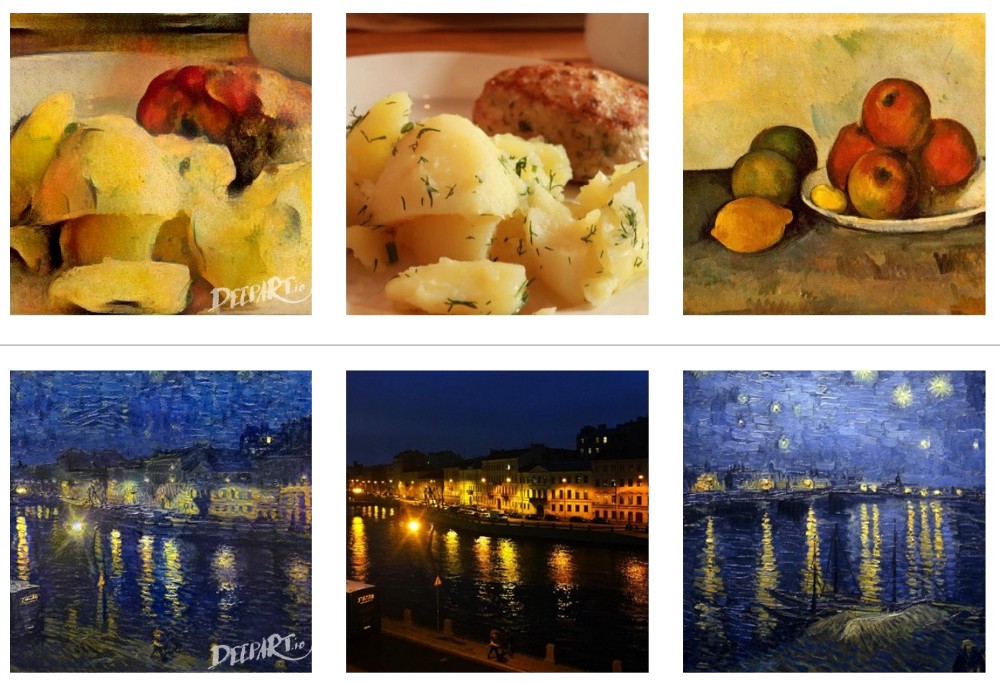Recent advances in digital technology have undoubtedly changed the art world forever, whether or not those with a more traditional approach approve of these changes. There are now so many ways for us to create beautiful and inspiring creative pieces, and these tools are accessible for anyone — not just the artistic elite.
One such piece of tech that’s gaining popularity is ‘neural networks’, a form of artificial intelligence (AI) that uses a computational approach. The process works by taking in a large amount of information, running this information through a large set of nodes (as with neurons within the human brain), and then transforming the original input into a new form. The neural networks approach differs from other computational processes in that it learns from its mistakes too — it will build upon feedback to create a different overall output the following time it attempts to solve a given ‘problem’.
This ability to grow and improve means that neural networks are now being used to carry out tasks that were previously thought to be the reserve of human intelligence. This is true within the world of art. Currently, many technological advances are seen in a negative light for a whole host of reasons, whether due to people losing their jobs or the possible effect on the environment. However, it seems to me that technological development like this can only be a good thing. It allows us to create new and exciting visual media that would never have been possible before.

The impact this technology will have on the creative sphere is all the more important when considering the role art has to play both in the world at large and within the dialogue of cultures. Where language falls down, art acts as the ultimate form of communication — allowing us to translate the deepest feelings and most outlandish ideas into something anyone can understand, regardless of where they are from or what their own cultural heritage is.
It is with this in mind that we can use technology to create art, such as with apps like Deep Art that apply a filter to your photographs to recreate them in a different artistic style. Apps usually come with simple instructions but to create the best overall result you have to think about the artistic process as a whole.
Explore a new cultural context
The first step in using art with new technology to explore different cultures to take is to visualise your final result. For example, you might have seen a particularly impressive bridge whilst on holiday, and be intrigued to see how it might look at night when the streetlamps set the scene off against the dark sky.

Next, it’s important to consider your potential piece of work in terms of a dialogue of cultures. What is the context of your work? Consider the historical background of your location or other pieces of work in the same style that inspire you.
It’s also important to decide which particular artistic style you wish to choose before going ahead taking and editing your photo. This is due to the fact that you’ll need to understand why you’ve chosen this style to understand your intent in creating this piece. For example, you might choose the style of Van Gogh due to the abundance of bridges in his hometown of the Netherlands if you wish to create an artistic impression of how the work of Van Gogh could look had he grown up in and been inspired by another part of the world.

Find an interesting view of the world
The next part of your process should be to take the photographs. There are a few different routes you can go down here. Some people prefer to work straight from the device they’ll be editing the photos on and therefore use a phone or tablet to take photographs. Others prioritise the quality of the images over the spontaneity that comes with instant photo editing, so might use their camera and then upload these photos to a different device later.
Use the available technology to create a new art work
Next, you can use your application of choice to edit the photos. The beauty of using this technology is that there really is no limit to the different versions and style you can experiment with. This is different to creating physical art, where any changes you make are permanent and irreversible. Take advantage of this by really pushing yourself to consider new angles or artistic styles until you achieve the perfect effect.

Appreciate new insights in the spirit of a dialogue of cultures
Students who have created art in this way have found it has really opened their eyes to the possibilities of integrating technology within their own artistic process. Through neural network tools, they are able to add another dimension to their own experience of the world around them and understand in greater detail the importance of interpreting work created by artists of the past in a way that adds to and informs their own style.
Creating art in this way will allow you to truly understand the importance of interpreting art in different ways and allow you to get in touch with your own artistic style by expressing yourself through the work of others. You’ll go beyond theory by learning how to apply new techniques. These are tools that will act as a gateway to a more in-depth understanding of the dialogue of cultures.
Artistic Style Transfer Examples



This post appeared on doc-research.org on March 13, 2018.
